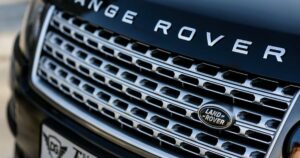The advantages of Hydrogen fuel cells are massive and are absolutely the perfect path to zero-carbon levels we’ve been promised for 2050.
1. They combine hydrogen and oxygen to produce electrical energy and water, no fuel could be cleaner. They can actually clean the polluted air we currently breath.
2. It is the most plentiful element on earth, actually anywhere in the universe!
3. There are no adverse environmental effects as the only by-products produced are heat and water.
4. Non-toxic (compare this to nuclear power, natural gas or coal)
5. 50% less fuel required for a vehicle’s combustion engine.
6. Almost zero emissions, zero production of greenhouse gas and reduces each individuals carbon footprint.
7. Electric cars require upto 5 hours of charging, Hydrogen Fuel cells; less than 5 minutes. Yes that’s correct, less than 5 minutes for a total charge and can then cover between 300-400miles of range before its next charge.
So can I buy a hydrogen car?
Yes you can but currently you have the choice of only 2 in the UK.
Hyundai Nexo
Hyundai have claimed “With a total of 350 miles driven overall, the car actually cleans the air as it drives”.
“The Nexo cleaned more than 900kg (918.75kg) of air on London roads during their Clean Driving™ Month in November 2018 .The same amount of air that 1 adult breathes in 60 days or 1,455 adults breathe in one hour.
It has an advanced air purification system which filters 99.9% of very fine dust (PM2.5) which is then retained in the NEXO and not expelled back into the air.
Nexo’s air filtration system uses three stages of filtering. Firstly, outside air passes through an advanced air filter where 97% of ultrafine particulates alongside harmful gases such as Sulphur dioxide and Nitrous dioxide are filtered and retained. Remaining particulates are then absorbed on the surface of the humidifier in stage two and finally the air reaches the Gas Diffusion Layer within the fuel cell stack. This layer is made of carbon fibre paper with a microspore structure allowing for further filtration – the resulting air released has over 99.9% of ultra-fine particles and toxic gases filtered out”.
It is a surprisingly nice looking top of the Hyundai range SUV with a driving range of upto 414 miles (WLTP).
The hydrogen fuel cell electric vehicle emits nothing but water and can be refuelled in less than 5 minutes – similar to the time it takes to refuel a conventional diesel or petrol car.
Toyota Mirai
Toyota’s second generation 2021 Mirai is described by Toyota as using a “zero emission hydrogen fuel cell, with a new completely redesigned fuel cell system, significant reductions in the size and weight of all principal components and a new platform with a repackaged powertrain to allow for a further third hydrogen fuel tank to be added.
They have been able to increase the car’s driving range to around 400 miles (more than most petrol fuelled vehicle’s) with the ability to refuel in five minutes or less.
Again it is a very attractive car, Toyota have gone with a swish looking 5 door Hatchback rather than the SUV that Hyundai have developed with the Nexo so although there are only 2 Hydrogen fuel celled vehicles available in the UK there is a bit of choice for the buyer.
Toyota have also made their hydrogen fuel cell technology patents available for free to all other manufacturers to develop their own systems which is very commendable given the costs involved to be a pioneer in this technology, so hats off to them for that.
So why aren’t their more Hydrogen vehicles available?
There is no doubt hydrogen cars makes perfect sense, the technology is there, there are some disadvantages; it’s highly flammable, it requires precious metals within the cells such as iridium and platinum, making the cost of Hydrogen vehicles very expensive but basically these are all things that could be ironed out in technological advancements and with more unit sales, overall costs would ultimately reduce.
But in the real world there are 3 major reasons Hydrogen is way, way behind the Electric Vehicle revolution.
Infrastructure and the Investment required are 2 reasons, the UK currently has only 12 Hydrogen filling stations in the UK, simply not enough to create a demand for owning a hydrogen fuelled vehicle. The technology is currently stuck in a ‘chicken and egg’ situation as major investment is needed plus the third and probably most obvious reason is the current cost.
1. Infrastructure
As fossil fuels have been used for decades, the infrastructure for this power supply already exists.
Large scale adoption of hydrogen fuel cell technology for automotive applications will require new refuelling infrastructure to support it, although for long-range applications such as those for HGVs and delivery truck is it likely the start-to-end refueling will be used.
2. Investment is required
Hydrogen fuel cells need investment to be developed to the point where they become a genuinely viable energy source. This will also require the political will to invest the time and money into development in order to improve and mature the technology.
Put simply, the global challenge for development of widespread and sustainable hydrogen energy is how best to incrementally build the ‘supply and demand’ chain in the most cost-effective manner.
3. Current vehicle cost
In short they are expensive, very expensive. As previously mentioned the cost for the precious metals required is absurd and this as well as the small number of units being produced contributes to the high current cost. It currently makes ownership almost impossible.
The Hyundai Nexo comes in just 1 specification level which is high end with a great deal of standard specification, current micro-chip availability dependent of course (see our previous news) explaining how manufacturers are dealing with the shortage crisis the UK RRP is £69,495 on the road.
The Toyota Mirai comes in 3 spec levels, from the ‘Design’ level entry model at £49,995, the Design Plus at £53,995 to the top of the range Design Premium at £64,995.
Absolutely crazy money.
However there are signs we’ll see an increased and wider-spread use of HGV trucks using Hydrogen fuel, proving its benefits slowly filtering down to regular passenger car owners and buyers.
Increased numbers of fuel stations offering Hydrogen fuel should then follow to accommodate HGV drivers and ultimately persuade the general car buying public to get onboard with increased numbers of manufacturers fully investing in the technology and thus reducing the cost of ownership, all in time for the 2050 zero emissions target.
Additional details given with thanks by TWI Global

























































